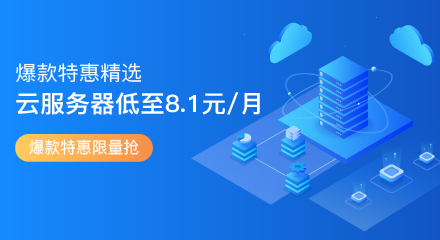websocket是一种长连接协议,相较于传统的http短连接,websocket不仅可以由客户端向服务器发送消息,可以主动向客户端发起信息,经常用于及时聊天,游戏和服务器向客户端推送信息。
主要优点:
1. 节约带宽。 不停地轮询服务端数据这种方式,使用的是http协议,head信息很大,有效数据占比低, 而使用WebSocket方式,头信息很小,有效数据占比高。
2. 无浪费。 轮询方式有可能轮询10次,才碰到服务端数据更新,那么前9次都白轮询了,因为没有拿到变化的数据。 而WebSocket是由服务器主动回发,来的都是新数据。
3. 实时性,考虑到服务器压力,使用轮询方式不可能很短的时间间隔,否则服务器压力太多,所以轮询时间间隔都比较长,好几秒,设置十几秒。 而WebSocket是由服务器主动推送过来,实时性是最高。
接下来我们看看怎么在springboot中使用websocket和html页面交互:
首先新建springboot项目,导入需要的websocket和springboot依赖,pom.xml配置如下:
<?xml version="1.0" encoding="UTF-8"?>
<project xmlns="http://maven.apache.org/POM/4.0.0" xmlns:xsi="http://www.w3.org/2001/XMLSchema-instance"
xsi:schemaLocation="http://maven.apache.org/POM/4.0.0 http://maven.apache.org/xsd/maven-4.0.0.xsd">
<modelVersion>4.0.0</modelVersion>
<groupId>com.lk</groupId>
<artifactId>websocketdemo</artifactId>
<version>0.0.1-SNAPSHOT</version>
<packaging>jar</packaging>
<name>websocketdemo</name>
<description>Demo project for Spring Boot</description>
<parent>
<groupId>org.springframework.boot</groupId>
<artifactId>spring-boot-starter-parent</artifactId>
<version>2.0.2.RELEASE</version>
<relativePath/> <!-- lookup parent from repository -->
</parent>
<properties>
<project.build.sourceEncoding>UTF-8</project.build.sourceEncoding>
<project.reporting.outputEncoding>UTF-8</project.reporting.outputEncoding>
<java.version>1.8</java.version>
</properties>
<dependencies>
<dependency>
<groupId>org.springframework.boot</groupId>
<artifactId>spring-boot-starter-web</artifactId>
</dependency>
<dependency>
<groupId>org.springframework.boot</groupId>
<artifactId>spring-boot-starter-websocket</artifactId>
</dependency>
<dependency>
<groupId>org.springframework.boot</groupId>
<artifactId>spring-boot-starter-test</artifactId>
<scope>test</scope>
</dependency>
</dependencies>
<build>
<plugins>
<plugin>
<groupId>org.springframework.boot</groupId>
<artifactId>spring-boot-maven-plugin</artifactId>
</plugin>
</plugins>
</build>
</project>
application.properties中配置tomcat端口,我配置的是80:
server.port=80然后就可以开始配置websocket了,首先创建WebSocket配置文件:WebSocketConfig.class
@Configuration
public class WebSocketConfig {
@Bean
public ServerEndpointExporter serverEndpointExporter() {
return new ServerEndpointExporter();
}
}
再创建WebSocket服务器类:WebSocketServer.class,具体代码说明注释都写得很清楚了:
package com.cyjz.impl;
import org.apache.log4j.LogManager;
import org.apache.log4j.Logger;
import org.springframework.stereotype.Component;
import javax.websocket.*;
import javax.websocket.server.PathParam;
import javax.websocket.server.ServerEndpoint;
import java.io.IOException;
import java.util.concurrent.ConcurrentHashMap;
@Component
//访问服务端的url地址
@ServerEndpoint(value = "/websocket/{id}")
public class WebSocketServer {
private static int onlineCount = 0;
private static ConcurrentHashMap<String, WebSocketServer> webSocketSet = new ConcurrentHashMap<>();
//与某个客户端的连接会话,需要通过它来给客户端发送数据
private Session session;
private static Logger log = LogManager.getLogger(WebSocketServer.class);
private String id = "";
/**
* 连接建立成功调用的方法*/
@OnOpen
public void onOpen(@PathParam(value = "id") String id, Session session) {
this.session = session;
this.id = id;//接收到发送消息的人员编号
webSocketSet.put(id, this); //加入set中
addOnlineCount(); //在线数加1
log.info("用户"+id+"加入!当前在线人数为" + getOnlineCount());
try {
sendMessage("连接成功");
} catch (IOException e) {
log.error("websocket IO异常");
}
}
/**
* 连接关闭调用的方法
*/
@OnClose
public void onClose() {
webSocketSet.remove(this); //从set中删除
subOnlineCount(); //在线数减1
log.info("有一连接关闭!当前在线人数为" + getOnlineCount());
}
/**
* 收到客户端消息后调用的方法
*
* @param message 客户端发送过来的消息*/
@OnMessage
public void onMessage(String message, Session session) {
System.err.println("来自客户端的消息:" + message);
log.info("来自客户端的消息:" + message);
//可以自己约定字符串内容,比如 内容|0 表示信息群发,内容|X 表示信息发给id为X的用户
String sendMessage = message.split("[|]")[0];
String sendUserId = message.split("[|]")[1];
try {
if(sendUserId.equals("0"))
sendtoAll(sendMessage);
else
sendtoUser(sendMessage,sendUserId);
} catch (IOException e) {
e.printStackTrace();
}
}
/**
*
* @param session
* @param error
*/
@OnError
public void onError(Session session, Throwable error) {
log.error("发生错误");
error.printStackTrace();
}
public void sendMessage(String message) throws IOException {
this.session.getBasicRemote().sendText(message);
}
/**
* 发送信息给指定ID用户,如果用户不在线则返回不在线信息给自己
* @param message
* @param sendUserId
* @throws IOException
*/
public void sendtoUser(String message,String sendUserId) throws IOException {
if (webSocketSet.get(sendUserId) != null) {
if(!id.equals(sendUserId))
webSocketSet.get(sendUserId).sendMessage( "用户" + id + "发来消息:" + " <br/> " + message);
else
webSocketSet.get(sendUserId).sendMessage(message);
} else {
//如果用户不在线则返回不在线信息给自己
sendtoUser("当前用户不在线",id);
}
}
/**
* 发送信息给所有人
* @param message
* @throws IOException
*/
public void sendtoAll(String message) throws IOException {
for (String key : webSocketSet.keySet()) {
try {
webSocketSet.get(key).sendMessage(message);
} catch (IOException e) {
e.printStackTrace();
}
}
}
public static synchronized int getOnlineCount() {
return onlineCount;
}
public static synchronized void addOnlineCount() {
WebSocketServer.onlineCount++;
}
public static synchronized void subOnlineCount() {
WebSocketServer.onlineCount--;
}
public static ConcurrentHashMap<String, WebSocketServer> getWebSocketSet() {
return webSocketSet;
}
public static void setWebSocketSet(ConcurrentHashMap<String, WebSocketServer> webSocketSet) {
WebSocketServer.webSocketSet = webSocketSet;
}
}这时我们的webSocket后端已经创建好了,接下来写两个前端代码:
<!DOCTYPE HTML>
<html>
<head>
<title>WebSocket</title>
</head>
<body>
Welcome<br/>
<input id="text" type="text" /><button onclick="send()">Send</button> <button onclick="closeWebSocket()">Close</button>
<div id="message">
</div>
</body>
<script type="text/javascript">
var websocket = null;
//判断当前浏览器是否支持WebSocket
if('WebSocket' in window){
websocket = new WebSocket("ws://localhost:80/websocket/2");
}
else{
alert('Not support websocket')
}
//连接发生错误的回调方法
websocket.onerror = function(){
setMessageInnerHTML("error");
};
//连接成功建立的回调方法
websocket.onopen = function(event){
setMessageInnerHTML("open");
}
//接收到消息的回调方法
websocket.onmessage = function(event){
setMessageInnerHTML(event.data);
}
//连接关闭的回调方法
websocket.onclose = function(){
setMessageInnerHTML("close");
}
//监听窗口关闭事件,当窗口关闭时,主动去关闭websocket连接,防止连接还没断开就关闭窗口,server端会抛异常。
window.onbeforeunload = function(){
websocket.close();
}
//将消息显示在网页上
function setMessageInnerHTML(innerHTML){
document.getElementById('message').innerHTML += innerHTML + '<br/>';
}
//关闭连接
function closeWebSocket(){
websocket.close();
}
//发送消息
function send(){
var message = document.getElementById('text').value;
websocket.send(message);
}
</script>
</html><!DOCTYPE HTML>
<html>
<head>
<title>WebSocket</title>
</head>
<body>
Welcome<br/>
<input id="text" type="text" /><button onclick="send()">Send</button> <button onclick="closeWebSocket()">Close</button>
<div id="message">
</div>
</body>
<script type="text/javascript">
var websocket = null;
//判断当前浏览器是否支持WebSocket
if('WebSocket' in window){
websocket = new WebSocket("ws://localhost:80/websocket/1");
}
else{
alert('Not support websocket')
}
//连接发生错误的回调方法
websocket.onerror = function(){
setMessageInnerHTML("error");
};
//连接成功建立的回调方法
websocket.onopen = function(event){
setMessageInnerHTML("open");
}
//接收到消息的回调方法
websocket.onmessage = function(event){
setMessageInnerHTML(event.data);
}
//连接关闭的回调方法
websocket.onclose = function(){
setMessageInnerHTML("close");
}
//监听窗口关闭事件,当窗口关闭时,主动去关闭websocket连接,防止连接还没断开就关闭窗口,server端会抛异常。
window.onbeforeunload = function(){
websocket.close();
}
//将消息显示在网页上
function setMessageInnerHTML(innerHTML){
document.getElementById('message').innerHTML += innerHTML + '<br/>';
}
//关闭连接
function closeWebSocket(){
websocket.close();
}
//发送消息
function send(){
var message = document.getElementById('text').value;
websocket.send(message);
}
</script>
</html>两个前端代码都是一样的,不同的地方在于一个访问是new WebSocket("ws://localhost:80/websocket/1");一个是new WebSocket("ws://localhost:80/websocket/2");即访问id传参不同,这时启动springboot后台服务,再打开两个前端html文件:
根据之前在代码中定义的输入格式:“信息内容|接受者Id|”进行输入,当输入id为0时表示群发:
注意:本文归作者所有,未经作者允许,不得转载


